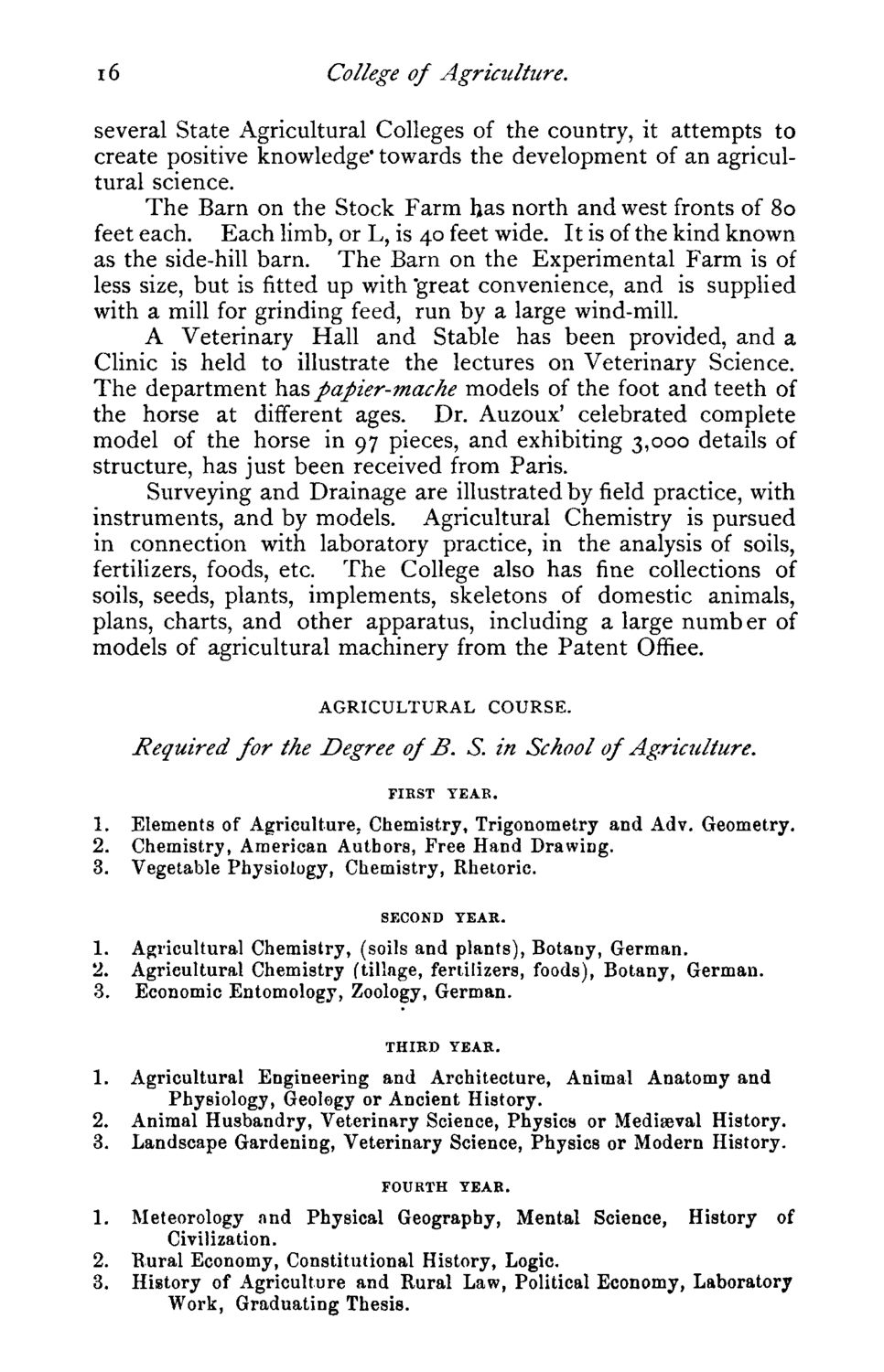| |
| |
Caption: Course Catalog - 1877-1878 Version B
This is a reduced-resolution page image for fast online browsing.

EXTRACTED TEXT FROM PAGE:
16 College of Agriculture. several State Agricultural Colleges of the country, it attempts to create positive knowledge" towards the development of an agricultural science. The Barn on the Stock Farm has north and west fronts of 80 feet each. Each limb, or L, is 40 feet wide. It is of the kind known as the side-hill barn. The Barn on the Experimental Farm is of less size, but is fitted up with 'great convenience, and is supplied with a mill for grinding feed, run by a large wind-mill. A Veterinary Hall and Stable has been provided, and a Clinic is held to illustrate the lectures on Veterinary Science. The department has, papier-mache models of the foot and teeth of the horse at different ages. Dr. Auzoux' celebrated complete model of the horse in 97 pieces, and exhibiting 3,000 details of structure, has just been received from Paris. Surveying and Drainage are illustrated by field practice, with instruments, and by models. Agricultural Chemistry is pursued in connection with laboratory practice, in the analysis of soils, fertilizers, foods, etc. The College also has fine collections of soils, seeds, plants, implements, skeletons of domestic animals, plans, charts, and other apparatus, including a large number of models of agricultural machinery from the Patent Offiee. AGRICULTURAL COURSE. Required for the Degree of B. S. in School of Agriculture. FIRST TEAE. 1. Elements of Agriculture, Chemistry, Trigonometry and Adv. Geometry. 2. Chemistry, American Authors, Free Hand Drawing. 3. Vegetable Physiology, Chemistry, Rhetoric. SECOND TEAR. 1. Agricultural Chemistry, (soils and plants), Botany, German. 2. Agricultural Chemistry (tillage, fertilizers, foods), Botany, German. 3. Economic Entomology, Zoology, German. THIRD YEAR. 1. Agricultural Engineering and Architecture, Animal Anatomy and Physiology, Geology or Ancient History. 2. Animal Husbandry, Veterinary Science, Physics or Mediaeval History. 3. Landscape Gardening, Veterinary Science, Physics or Modern History. FOURTH YEAR. 1. Meteorology and Physical Geography, Mental Science, History of Civilization. 2. Rural Economy, Constitutional History, Logic. 3. History of Agriculture and Rural Law, Political Economy, Laboratory Work, Graduating Thesis.
| |